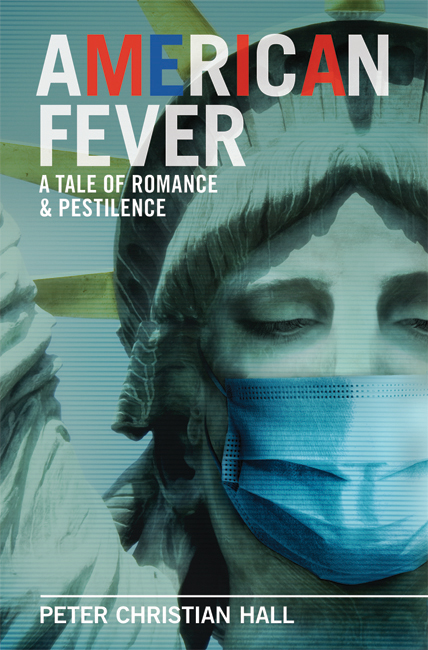Day 174 (#2): H5N1 & Hope-Simpson
The following book report was composed by your humble scholar in a state of excited delirium triggered by close theoretical and historical contemplation of the virus that nearly killed me days ago. R. Edgar Hope-Simpson’s The Transmission of Epidemic Influenza was my ultimate page-turner.
I begin by digressing: Shortly before his death in 2005, vaccine pioneer Maurice Hilleman told his biographer in Vaccinated that only 3 of the 16 (HA) hemagglutinin subtypes transmit flu easily among humans. Each, he said, does this every 68 years, and they do it in order, cycling H1—H2—H3. The H5 subtype, he said, was only for the birds. He’d have us battling a resurgent H2 in 2025 after a long pause between pandemics. Ominously, H2 is the one Missouri pigs share with people and birds.
 INFECTION SITES OF H1N1 vs. H5N1: RED IS THE COLOR OF LETHALITY & TRANSMISSION (Tim Vickers)Hilleman was cheating. His chart of outbreaks doesn’t jibe with most others. For one thing, he skips the (non-pandemic) revival that 1918’s H1 staged in 1977, choosing instead to claim a “mini-pandemic” for H1 in 1986. Otherwise he couldn’t claim that flu subtypes follow a 68-year cycle.
INFECTION SITES OF H1N1 vs. H5N1: RED IS THE COLOR OF LETHALITY & TRANSMISSION (Tim Vickers)Hilleman was cheating. His chart of outbreaks doesn’t jibe with most others. For one thing, he skips the (non-pandemic) revival that 1918’s H1 staged in 1977, choosing instead to claim a “mini-pandemic” for H1 in 1986. Otherwise he couldn’t claim that flu subtypes follow a 68-year cycle.
Just about everyone in the flu business has pet theories, scientific convictions, and logical holes they try hard to overlook. As I showed months ago, prevailing flu dogma is deeply flawed. In summing up decades of his work in this book, Hope-Simpson effectively undermines preexisting theories as he attempts to establish his own New Concept. He seems admirably open to new data and I find his questions compelling, his arguments fascinating.
How I wish this spunky maverick were here to explain how H5N1 broke out, or at least to pose fresh challenges to the received wisdom that smothers us in useless expert babble.
Hope-Simpson made his name establishing that a virus could long lie dormant and then reemerge ferociously with a new set of symptoms. In assessing influenza, he didn’t much look to the animal world as a source for pandemics. He believed that human beings serve as a repository for what he considered a master viral genome. He thought we carry the entire code in generational waves.
Original Antigenic Sin
The first subtype of Influenza A to which each generation is exposed causes a primal immunity that stamps those carriers forever in a phenomenon called “original antigenic sin.” (Here, I pause to contemplate those kids who quietly came down with very mild H5N1 all over the world.) This subtype goes on to infect people for decades, with each survivor reactivating without symptoms for up to two years to infect others.
Eventually our subtype begins to run into too many specimens with primary immunity to it. In a process that remains mysterious and grand, the subtype vanishes all over the world, to be replaced in a pandemic by another subtype to which only old survivors of that flu carry immunity.
But only the first three listed hemagglutinin subtypes were previously known to transmit easily among people. Like Hilleman, Hope-Simpson believed H1, H2, and H3 comprised humanity’s infectious flu genome, though he ordered their appearances differently (H2-H3-H1…). What would he make of H5N1’s leap into the sequence? How did an upstart flu virus seed the world (all the way to Saskatoon) while the WHO was dogging it with Tamiflu blankets?
In his book, Hope-Simpson cites a 1979 letter to Lancet from China’s Dr. Wang Mau Liang, who suggested that a noninfectious subtype could recombine with another animal- or human-based influenza virus to create a new pathogenic strain. But H5N1 is not a reassorted virus, or even a recombined one. It’s a familiar one, located very close to H2 on an Influenza A family tree in Hope-Simpson’s book. (Could this somehow address why pre-1968 H2 carriers seem to bear some immunity to H5N1?) All we know is that the upstart H5 suddenly turned virulent and crashed the human cycle.
I’m guessing that Hope-Simpson would begin by theorizing that H5 was in us all along, a quiescent part of that genome. (The WHO concluded [in final reference to footnote #6] in 2008 that 15% to 20% of people over 40 bore “baseline” antibodies to H5N1.)
Given that those H2—H3—H1 cycles are known only to have operated since the late 19th century, our visionary doctor might wonder if H5N1 is an element of a much bigger cycle that runs over a greater stretch of time. Were people long ago dying from H5 strains? Could an H7 (or H16) follow in a new centuries-long cycle? Is there a genomic pattern so big that puny modern mortals can’t yet see it?
He might also ask if human beings have done something revolutionary to vault H5 into the subtype cycle. Did any prepandemic vaccines contain live elements that seeded the world, enabling H5N1 to jump a line it was never meant to be on? China tried plasmapheresis—injecting people with antibodies from survivors in hopes they would acquire immunity. Did some government(s) or corporation(s) try this, too? Did a bird flu correctly dismissed by Hilleman spook us into spreading it ourselves?
Just asking, folks. I don’t have a clue. I’m merely danged glad to be alive. I wish the old doc were, too.



 [American Fever]
[American Fever]